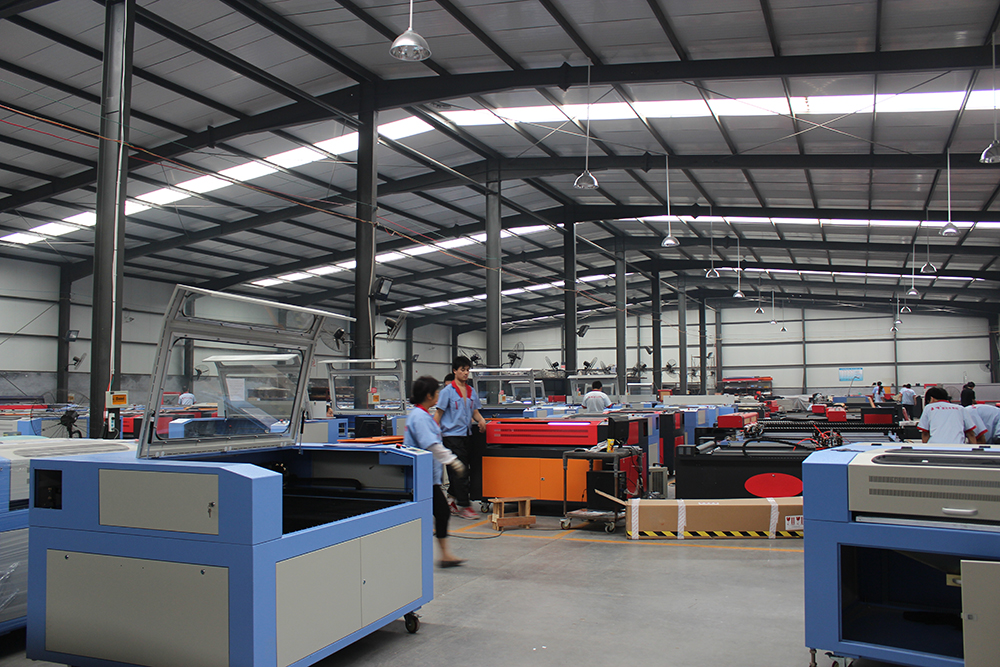-
Product
-
Fiber laser cutting machine
-
Profile Steel/ H-Beam Laser Cutter
high efficiency | high-performance | high quality -
Full Cover Fiber Laser Cutting Machine
supreme configuration | high precision | safe & pollution-free -
Sheet fiber laser cutting machine
tailor-made machine | efficiency boost -
Fiber Laser Bevel Cutting Machine
one-shot bevel | efficiency boost | streamlined process -
High precision fiber laser cutting machine
High precision | small footprint | fully enclosed -
Four-chuck Tube Cutting Lasers
truly zero-tailing | low cost per part | auto loader -
Three-chuck Tube Laser Cutting Machine
top production output | low cost per part | extremely short tailing -
Two-chuck Tube Laser Cutting Machine
top production output | low cost per part | extremely short tailing -
Full Enclosed Fiber Laser Cutting Machine
Integrated design saves installation time and shipping costs. - flexible processing | continuous cutting | efficient production
-
Fully Automatic Loading & Unloading Laser Cutting Production Line
intelligent production | optimizing factory space | reduce labor costs -
Sheet and Tube Fiber Laser Cutting Machine
supreme cost-effectiveness | dual-use laser | space-saving
-
-
Fiber laser welding machine
-
Air-cooled Portable Laser Welding Machine
more flexibility | easy to use | cost effective -
Automatic laser welding machine
fine welding seam | boosted efficiency -
Integrated fiber laser welding machine
instant welding | easy to operate & move -
Handheld fiber laser welding machine
long distance welding | multi-welding modes
-
- Fiber laser cleaning machine
- Bending Machine
-
Fiber laser cutting machine
- Solutions
- Why Morn Laser
- Price
- Contact
- VR
Menu
X- home
-
Product >
-
5 common problems and repair methods of fiber laser cutting machine
2024-09-10Fiber laser cutting machines are renowned for their unparalleled precision and efficiency in tackling a diverse range of materials. However, even the most advanced machinery is susceptible to issues that can compromise its performance. By recognizing and promptly addressing these common challenges, businesses can maintain optimal productivity and minimize downtime. Here's an in-depth look at five prevalent issues faced by fiber laser cutting machines, along with practical strategies for overcoming them.
1. Fluctuating Cutting Quality: Addressing Rough or Uneven Edges
Issue: The finished cuts exhibit rough or uneven edges, indicating a lack of consistency in cutting quality.
Solution:
Refine Focus: Ensure the laser beam is precisely focused. Misalignment or contamination of the focusing lens can hinder cutting precision. Regularly inspect and clean the lens to maintain optimal focus.
Optimize Gas Flow: Verify the assist gas flow settings. Both insufficient and excessive gas flow can negatively impact cut quality. Adjust the flow rate according to the material being processed.
Clean Optics: Keep optical components, including mirrors and lenses, free from debris. Regular cleaning ensures the beam path remains unobstructed, enhancing cutting accuracy.
2. Slow Cutting Speeds: Boosting Productivity
Issue: The machine fails to achieve the desired cutting speed, resulting in reduced productivity.
Solution:
Review Parameters: Examine and adjust cutting parameters, such as power settings, speed, and focus position, to match the specific requirements of the material being cut.
Optimize Setup: Ensure the machine is properly configured and free from mechanical hindrances that could slow down the cutting process.
Inspect Drive System: Check the drive system components, including motors and belts, for signs of wear or damage. Replace worn parts promptly to restore optimal performance.
3. Beam Deviation: Rectifying Misalignment
Issue: The laser beam deviates from its intended path, leading to misaligned cuts and reduced quality.
Solution:
Recalibrate Beam Path: Utilize a beam alignment tool to ensure all mirrors and the focusing lens are correctly aligned. Regular recalibration maintains beam accuracy.
Monitor Cooling System: Overheating can cause beam deviation. Ensure the cooling system is functioning efficiently and maintaining the recommended temperature range.
Secure Components: Tighten all connections and fittings to prevent loose components from causing misalignment. Regular inspections help maintain machine stability.
4. Fume and Smoke Accumulation: Ensuring a Safe Work Environment
Issue: Excessive fumes and smoke accumulate during cutting, posing health and safety risks.
Solution:
Enhance Ventilation: Ensure the ventilation system is adequate for the task, removing fumes and smoke efficiently. Regularly check exhaust fans and ducts for blockages.
Install Filters: Consider incorporating air filtration systems to capture and filter out harmful particles, further safeguarding the work environment.
Maintain Extraction System: Clean the extraction system regularly to prevent residue buildup and maintain optimal performance.
5. Frequent Downtime: Minimizing Disruptions
Issue: The machine experiences unexpected stoppages, disrupting production workflows.
Solution:
Inspect Electrical Connections: Regularly check all electrical connections and wiring for signs of wear or damage. Promptly repair or replace faulty components to prevent downtime.
Update Software: Ensure the machine's control software is up-to-date and free from bugs. Reinstall or update the software as necessary to maintain optimal performance.
Schedule Professional Maintenance: Arrange for regular maintenance checks with a qualified technician. This proactive approach helps identify and resolve potential issues before they escalate into major problems.
Conclusion
Maintaining the peak performance of a fiber laser cutting machine is vital for ensuring high-quality outputs and efficient production. By addressing common issues such as inconsistent cutting quality, slow cutting speeds, beam deviation, fume accumulation, and frequent downtime, businesses can keep their machines running smoothly. Regular maintenance and proactive troubleshooting not only prevent costly disruptions but also extend the lifespan of valuable equipment.

- Office Address:
- 17F, Building 5, Qisheng Mansion High-Tech Zone, Jinan, Shandong 250101, China
- Email: info@mornlaser.com
- Mobile/WhatsApp/WeChat: +86 151 6916 6350
CONTACT USCopyright © 2008-2022 Morn Laser All Rights Reserved.![]() Get a Quote
Get a Quote
![]() Get a Quote
Get a Quote
Cookies
We use cookies to improve our services and remember your choice for future visits. By clicking "Accept cookies", you consent to the use of cookies on this website.
Read our Privacy Policy
Get a Quote x
![]()







